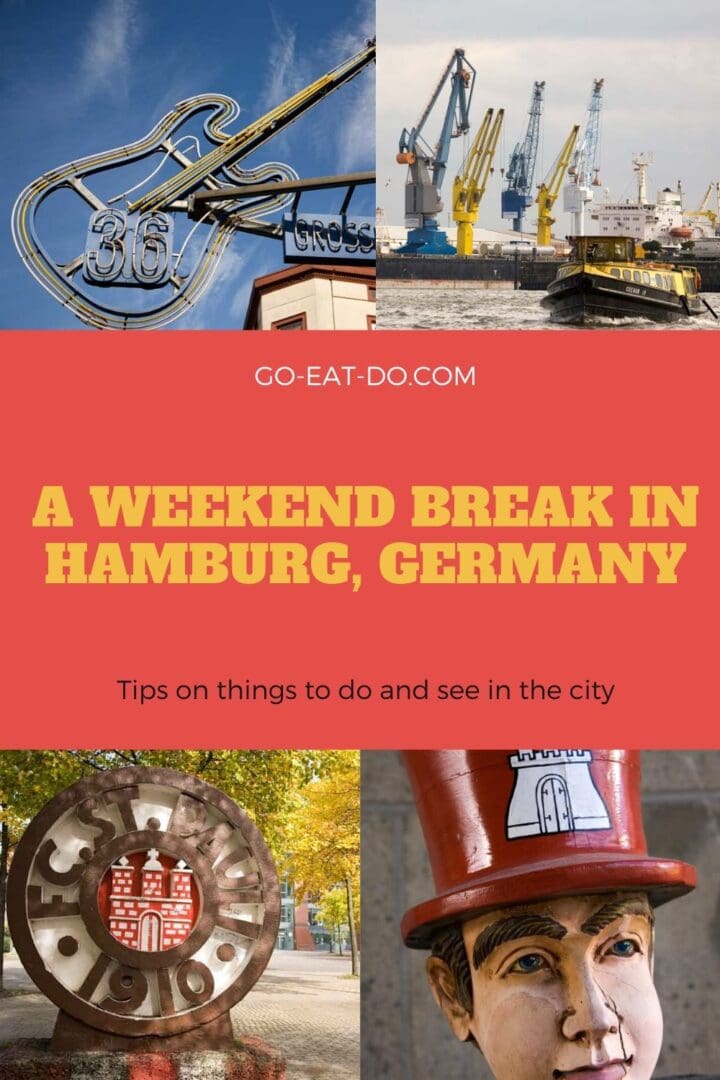Stuart Forster outlines things to do and see during a weekend break in Hamburg, Germany.
Disclosure: Some of the links below and banners are affiliate links, meaning, at no additional cost to you, I will earn a commission if you click through and make a purchase.
Standing on deck, on one of the pleasure boats that criss-cross the shipping lanes of the river Elbe during harbour tours, the cool maritime breeze and sunlit waterfront skyline make me conscious of the understated allure of Hamburg. Germany’s second city is a major port and also one of northern Europe’s most happening places.
German friends have long been urging me to return to Hamburg and, at last, I’ve made it. The city, they tell me, has experienced a renaissance since the Berlin Wall fell over two decades ago. The only thing that stopped me from coming here sooner was my inertia as Hamburg is little more than an hour’s flight from London or a 90-minute journey by Inter-City Express train from Berlin.
Hamburg as a weekend destination
Snobbishly and inaccurately, I admit that I might have been tempted to write off Hamburg as “too industrial”. Yet it’s a great place for a weekend break, with more than a fair share of quality restaurants, galleries, happening bars and upmarket shops.
I joined my harbour cruise from one of the Landungsbrücken (landing stages) of the St Pauli waterfront. The noon tour had an informative commentary in English but I was too frequently transfixed by the sights to give the guide’s words my full attention. The mini-cruise offers a good introduction to Hamburg, as much of it lies relatively close to the water.
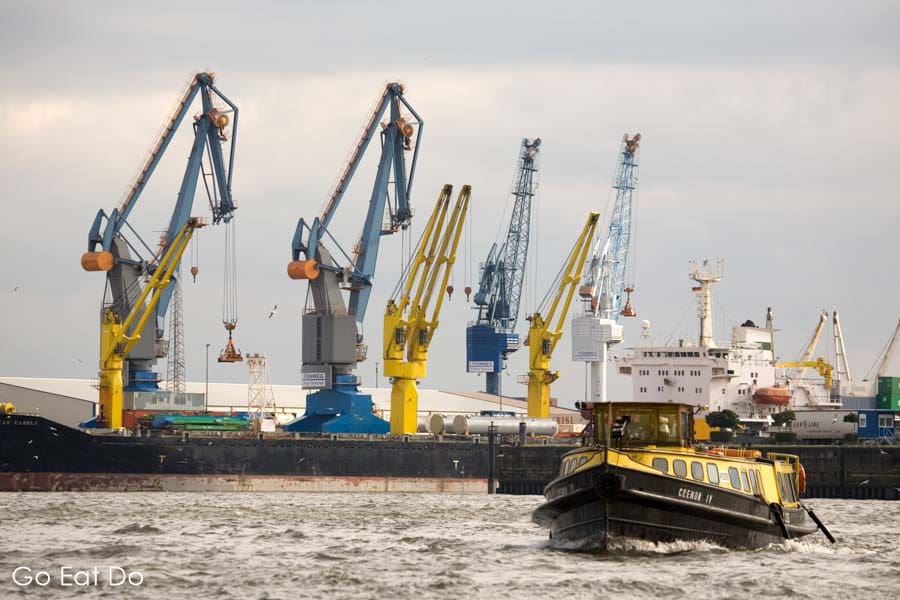
Docks and modern architecture
We swept past the docks, which bristle with colourful cranes and have well over 100,000 employees, and a couple of the impressive glass-fronted buildings designed by the architects Bothe, Richter and Tehrani, whose bold, contemporary structures number among the many Hamburg buildings which will interest aficionados of contemporary architecture and design.
We also cut along the canals of the Speicherstadt, which the guide described as “the world’s largest integrated complex of warehouses” with an area of 373,000 square metres. The neo-Gothic, red brick warehouses of the Speicherstadt were built between 1855 and 1910 to provide duty-free storage for imported goods, including carpets, spices, tobacco, tea and coffee. I made a mental note to pop into the Speicherstadt Museum, which is a good place to learn more about Hamburg’s maritime trading history.
The waterborne waitress offered me a choice of drinks and a plumped for an Astra beer, Hamburg’s local brew, and took a malty mouthful as I listened to my guide. Trade has been important for this city since 1189 when Emperor Frederick Barbarossa granted Hamburg’s ships exemption from duty for the 104-kilometre journey along the river Elbe to the sea. In 1321 the city became a member of the Hanseatic League of trading cities, and its wealth and importance grew. The Free and Hanseatic City of Hamburg, to give this place its full name, is still a city-state.

Maritime heritage and the Kiez
Hamburg’s maritime heritage plays a significant role in shaping the city and its inhabitant’s psyche. My German friends – the southerners at any rate – had warned me that Hamburg’s residents are cool and reserved, so I was pleasantly surprised by the openness and friendliness of the people I chatted with while out in the bars of St Pauli, the Kiez as locals call this part of town.
“I guess, we’re used to talking to strangers here as trading with foreigners was always part of our culture,” said Tomas Kaiser, an artist and tour guide, before ordering a fresh round of Astra beers. We were in one of the busy bars just off the Reeperbahn, a 930-metre-long street where rope was made in the days of sailing ships. In more recent years it became infamous for its live sex shows but, says Tomas, the growth of the internet killed demand and St Pauli is now cleaning up its act.

Theatre and musical productions
Tourists now pour into the area for the theatres, Cats being the first big musical to be staged in St Pauli during the mid-80s. Rocky – das Musical, telling the story of Sylvester Stallone’s boxer, is currently a hit. So instead of the red lights, it’s now the limelights that draw patrons.
The Astra beers slipped down very well and the following morning I felt obliged to take a long, not-so-early morning stroll to clear my head. I walked from the Gothic Rathaus (town hall), close to the Inner Alster Lake, to the bustling Moenckerbergerstrasse, in the centre of the city, then back towards the Alsterpavillion cafe in the Neustadt, to taste one of Germany’s great traditions, Kaffee und Kuchen (coffee and cake); the Germanic equivalent of high tea. It was a wonderful opportunity to tuck into a big piece of Kaesekuchen (cheesecake) and listen to the Kaffeeklatsch (an efficient German term to describe gossiping over coffee) taking place around me.
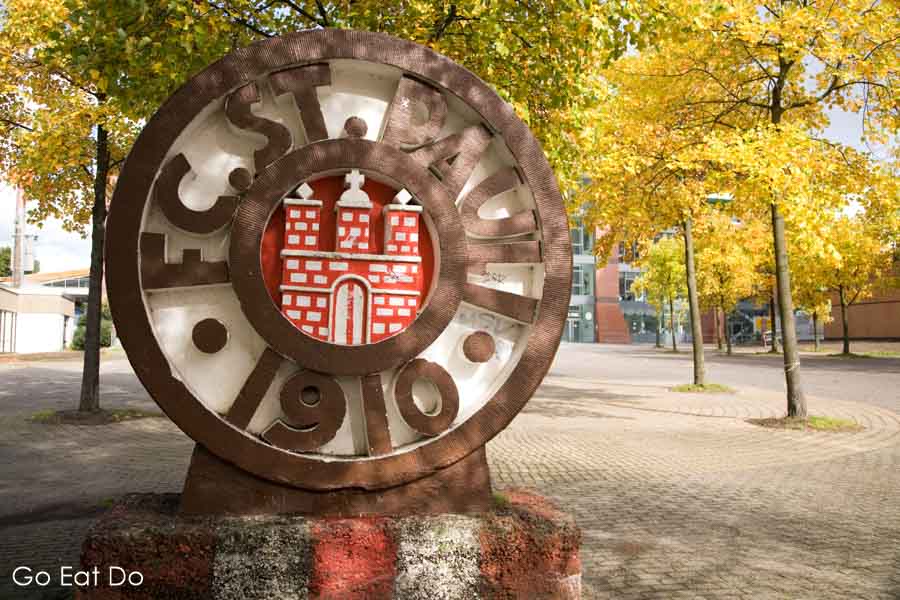
Boutique shopping and souvenirs
I’m not one of life’s natural shoppers but felt obliged to pick up a couple of souvenirs. Fortunately, I got chatting to Lilian, a local who could advise me: “The Schanzenviertel and Karolinenviertel are great for a unique shopping experience. I’d recommend Grosse Freiheit for clothes and accessories, and Chocofeh for beautiful, affordable accessories. These areas are good for vintage clothes, young independent designer boutiques, hip hop wear, shoe stores, plus great cafes and bars for those important breaks between shopping. If you fancy high street shops go to the Gaensemarkt and Moenckerbergerstrasse. For slightly haute couture boutiques, you should try ABC Strasse, off Gaensemarkt.”
Taking her advice, I looked around the stylish shops of the Schanzenviertel. The area has been renovated from a sooty, down-at-heel working district into a desirable residential area which also has a smattering of trendy yet alternative bars.
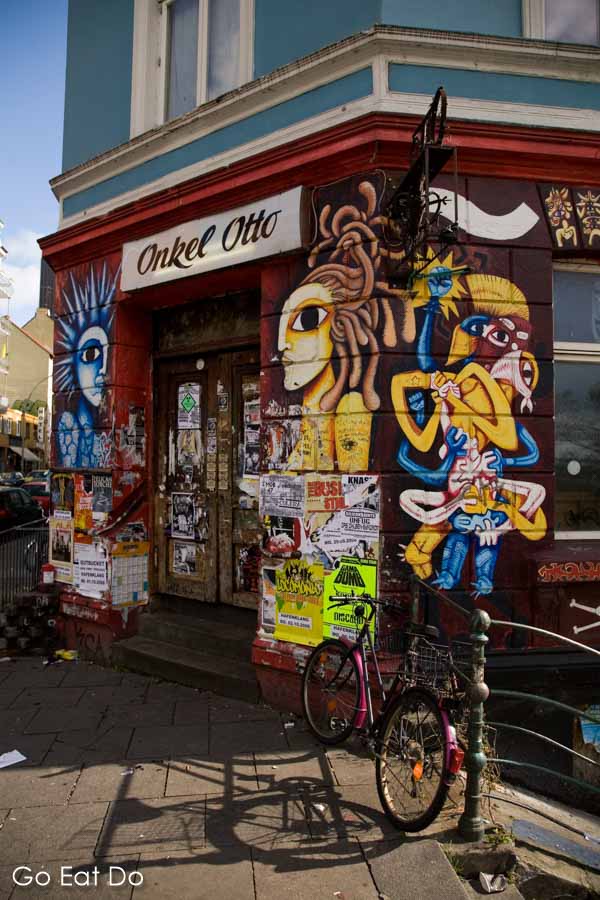
Dining out on local cuisine
When it came to eating out, I was pleasantly impressed by what Hamburg could offer. The city has restaurants serving cuisines from around the world and has much to offer discerning diners. Yet it was harder than I expected to find the local speciality Labskaus, a stew containing meat, potato and beetroot and topped with a herring and fried egg. “It is something that people will cook in more traditional houses,” explained one local before recommending the Gasthof Groeninger on Willy-Brandt-Strasse (tel. +49 (0) 40 331381).
There’s nothing like a good walk to aid digestion, and Hamburg offers a number of themed, guided walking tours. I joined up with a group about to tour publicly displayed works of art. The walk was easy going, as we stopped at regular intervals to listen to the guide talk about Hamburg’s sculptures and statues. It was also a chance to learn more about the city’s diverse architectural styles. We started in Deichstrasse, which is the oldest surviving part of the city, as most of it was destroyed in the great fire of 1842, whose storehouses back onto the Nikolaifleet canal. Then we walked towards the Expressionist Kontorhaueser (counting houses) built from chocolate-coloured bricks. To me, the most impressive building of all was the Chilehaus. From one angle the Chilehaus resembles a grand ocean liner.
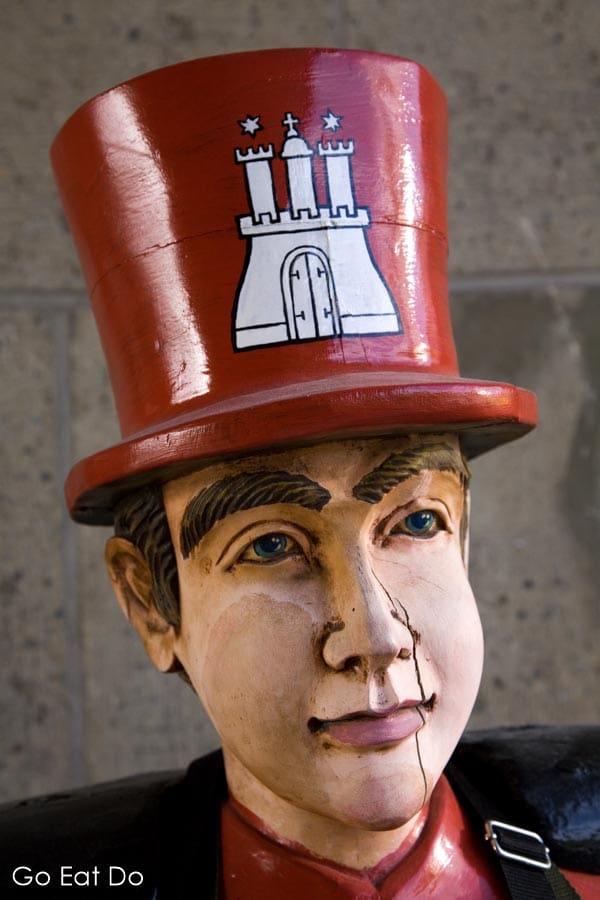
Hamburg for art and culture
When it comes to art and culture, the options in Hamburg are overwhelming. That said, many of the city’s galleries and 45 museums are situated within easy walking distance of each other, on what is known as the Art Mile, close to the main railway station. Culture expert Claus Friede estimates that people interested in art could easily spend five or six days in Hamburg’s main galleries.
As I experienced, one of the downsides to travelling in northern Europe is you never know when you’ll get a rainy day. Fortunately, there’s no shortage of indoor attractions here. So as the heavens opened, I headed to MiniaturWunderland, the world’s largest exhibition of model railways, at an H0 scale, a 1:87 ratio. Well over 600,000 hours of work have been invested in creating the ever-expanding model landscape, whose attention to detail is truly remarkable. The labour of love has attracted over ten million visitors since it opened, in 2000, and there’s even a section showing Hamburg in miniature.
Even the full-sized Hamburg impressed me as being a model city and has much to warrant return visits.
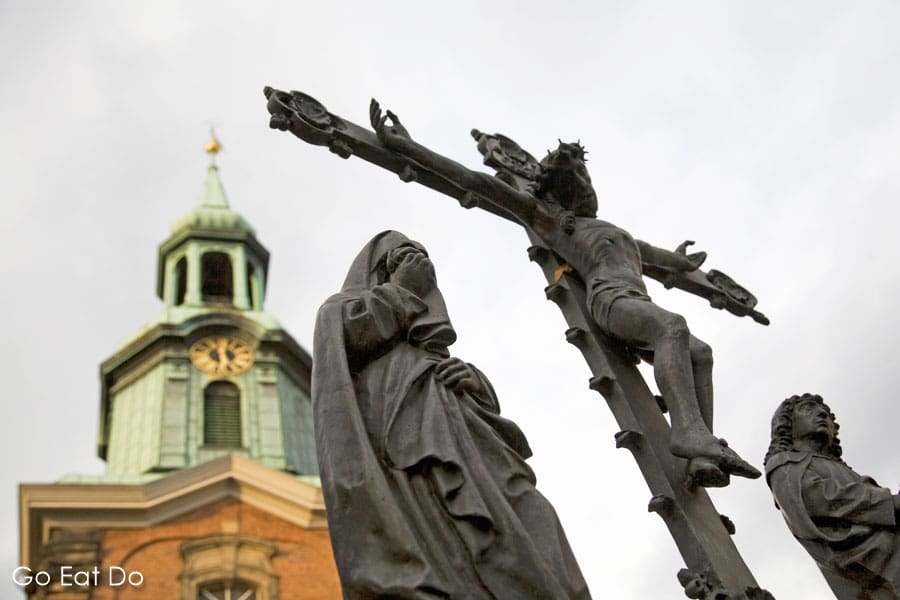
Further Information
Find out more about Hamburg’s attractions on the Hamburg Tourismus website:
Discover more about Germany on the Germany Travel website.
Did you find this post on things to do and see during a weekend in Hamburg useful? Feel free to leave comments below. Here’s a look at the Elbharmonie, Hamburg’s waterfront icon.
If you enjoyed this post why not sign up for the free Go Eat Do newsletter? It’s a hassle-free way of getting links to posts on a monthly basis.
‘Like’ the Go Eat Do Facebook page to see more photos and content.
